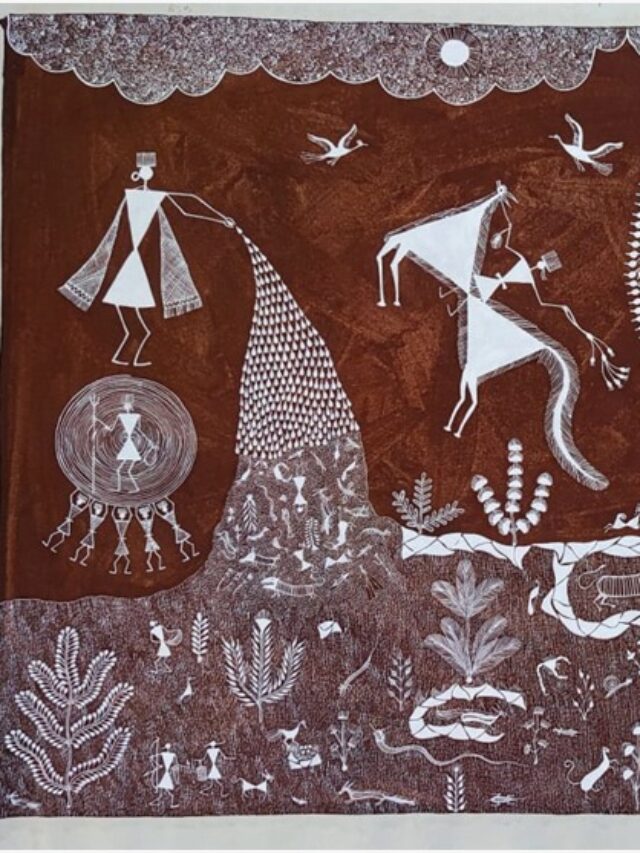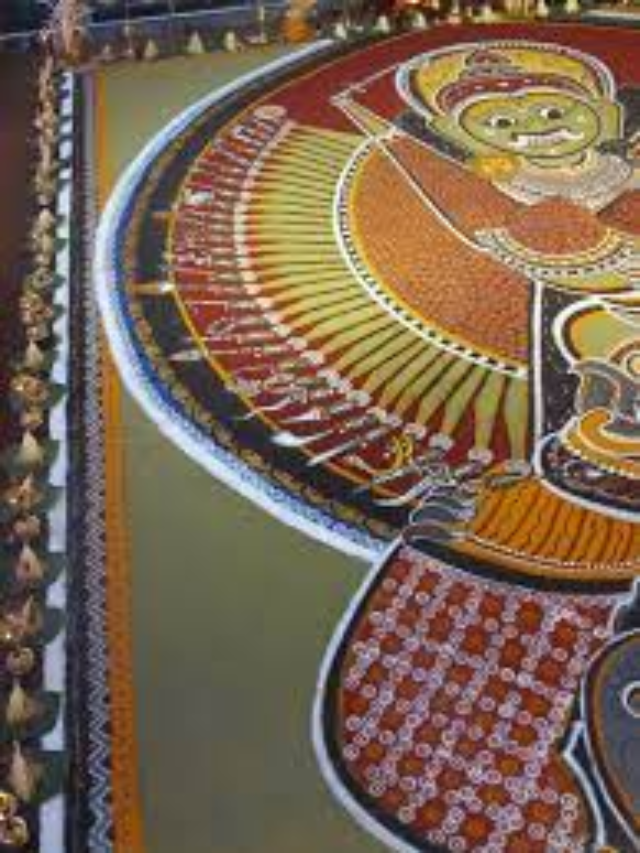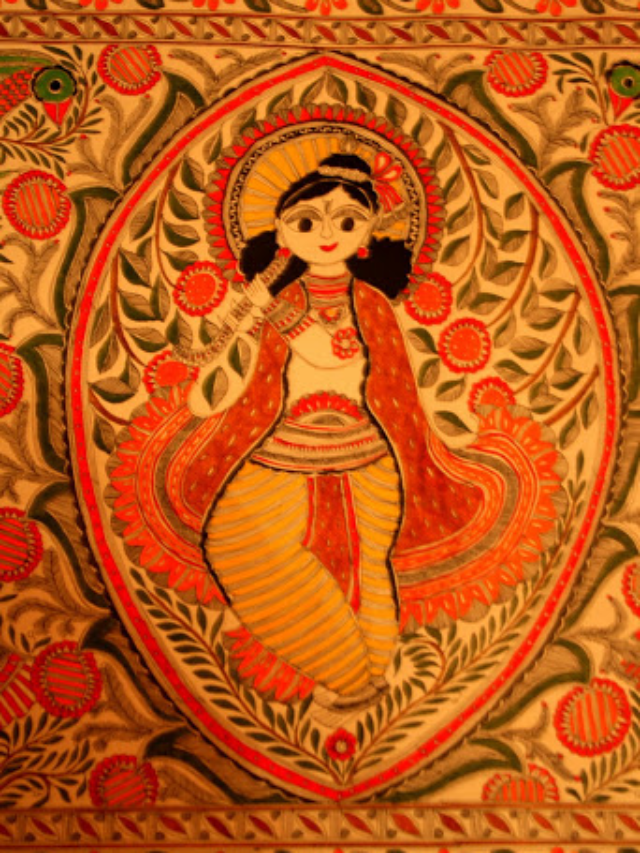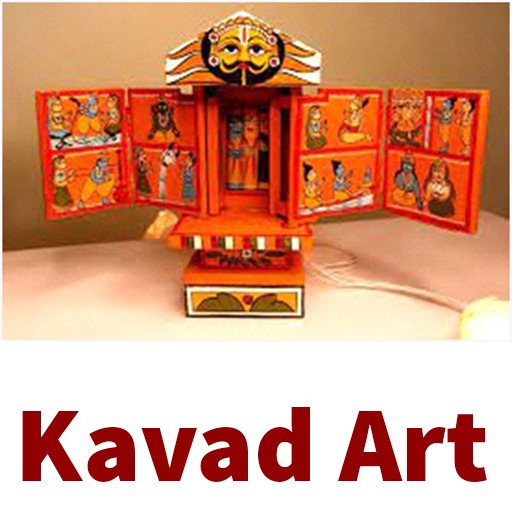What is Kavad art? India is a country with a different cultural heritage. Among the most popular customs is storytelling. Indians have spent generations listening and reading to mythology. Different areas utilize different mediums to tell these stories. The Kavad Art of Rajasthan, although, steals the show. Kavad is a movable wooden shrine having a panel that is hinged together and depicts Gods, local heroes, saints, and patrons. Kavad Art is told by a travelling priest.
He takes his Kavad to the jajman’s residence and begins narrating the story by unfolding the panel of the Kavad. The listener’s interest builds as each panel is shown. Its last panels of a traditional kavad would reveal a stunning portrait of Lord Rama, his brother Laxman, and his wife Sita. These moveable shrines were mostly used by persons who were unable to attend temple worship. Kavads range in size from three to six inches in length.


History:
Rajasthan’s Kavad Art can be traced back 400 years. In a small town in the Bhilwara district, Rajasthan, an artisan tribe (Kumawats), began the age-old practice of the Kavad Art. The kawadiyas are descended from the mythological figure ‘Shravan.’ Shravan is a little kid who was murdered by Raja Dashrath when carrying his blind parents on his back in a ‘kaawadi.’ Because they can’t get home, he asked Raja Dashratha to carry the temple to his parents as a final desire, and they could worship the Goddess. That’s where the idea of Kavad’s storytelling art began.
Community of Carpenters:
The carpenters’ group, often known as the Jangids and Sutars create the Kavad. The Kavad stories were originally told on cloth. However, as the fabric paintings became faded and ripped, the kawadiyas began to use wooden shrine boxes. With the use of modest carpenter equipment, the Sutar community crafts wooden boxes from mango and Selam trees.
The chitrakar paints exquisite eye-catching pictures of mythological figures, cultural icons, deities, or patrons just after Sutars’ job is done. Originally, synthetic dyes were utilized to create the hues. However, as time passed, the painters began to use commonly produced mineral powder hues. The foundation color of ancient kavad was always red.
Artists:
Presently, just a few artists continue the Kavad Art heritage of storytelling. These forms of art appear to have taken a back seat as our lifestyles have changed dramatically. Kavad Art is presently being performed by just a few artists in Bangalore and Rajasthan. Mangilal Mistri is one of the rare painters that believes in preserving the art form. He is a well-known Kavad Art ambassador.
Mistri has also introduced some new twists to the dying artwork of storytelling. He uses details such as current events to inform the rural populace about government programs. Satyanarayan Suthar of Chittorgarh, Rajasthan, is another artist who is keeping this craft alive. He also received the National Award for his artwork.


Storytelling:
My favorite aspect is the storyline. Inside its walls, heroes, criminals, robbers, jokers, monarchs, and princesses come to life. Stories from the Mahabharat and Ramayan, as well as local heroes and saints, vie for attention, anxious to be heard and revered. The Rajasthani Kavad art does not disappoint; the story’s guardians are frequently painted on the box’s exterior panels. The narrator begins by opening each panel and narrating the entire story. After many openings and closing of the folds, the sanctuary with the primary deity’s picture is revealed.
Today Kavad Art:
As a means of generating revenue, artists have begun to market the Kavad boxes as ornamental items. People may no longer listen to the kavadiya bhatts, but they can still enjoy these beauties as decorative ornaments in their homes. Buyers can personalize these boxes to meet their requirements. The kavad boxes have a fresh design, with modern color combinations and pictures. The Rajasthani Kavad Art shall live on in our hearts in some shape or another. It will most likely become decorative items in our houses. Supporting dedicated artists can help to save this endangered art form of storytelling.
Conclusion:
Kavad artwork is a unique form of storytelling that dates back approximately 500 years. Kavad is a Rajasthani art form that originated in the village of Bassi in the Chittorgarh area. Kavad is a portable wooden shrine decorated with stories from the Ramayana and Mahabharata, as well as folklore, that artists would transport from village to village and tell to the locals.
Kavads are movable temples built of mangoes or Sheesham wood by a tribe of Suthars, in Mewar, and delivered to their customers’ homes by storytellers known as Kaavadiyas from various locations in Rajasthan. Lord Vishwakarma, the heavenly architect of the world and greatest God of the Artworks, is considered a member of the Kaavdiyas.
For more posts like this visit Tribal Handcrafts blog.






